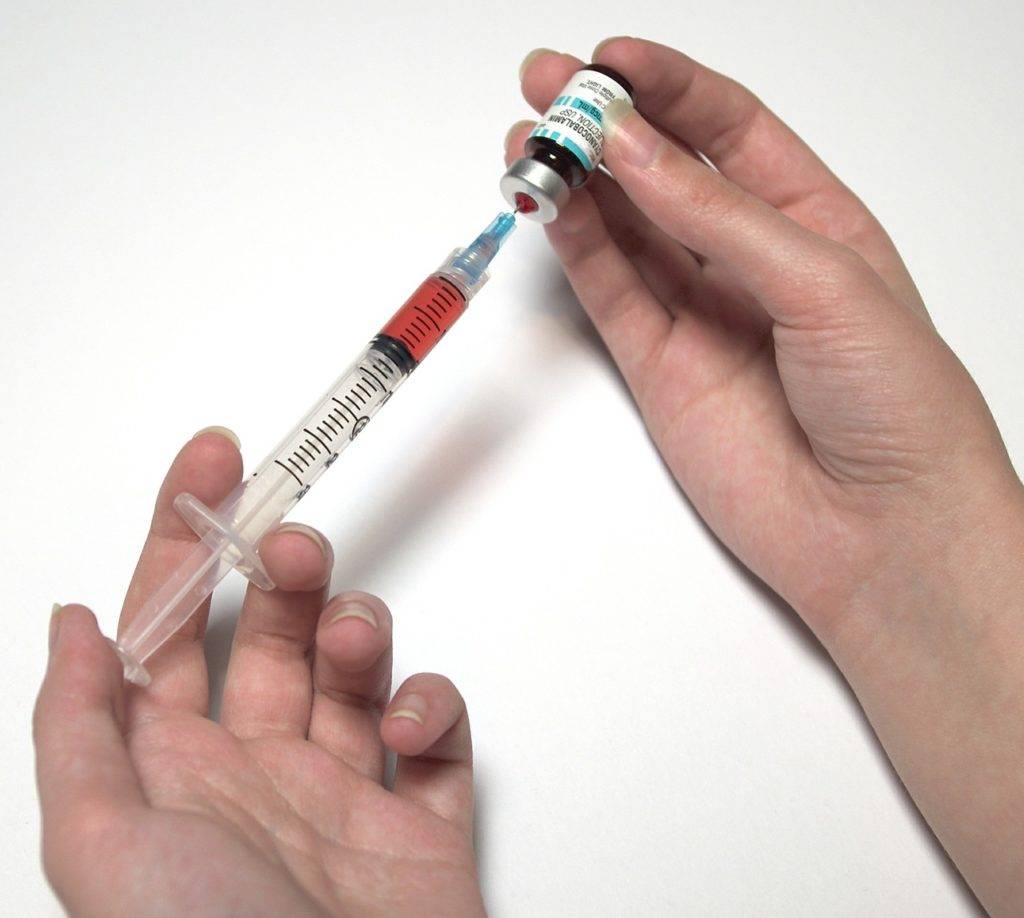
How to succeed with breastfeeding: a blueprint for the working mother
There are many stages in the breastfeeding process for a working mother. It starts a long time before conception and goes all to way through the return to work phase.
In this two-piece article, I will try to lay it down in plain language. Some parts of this article are based on the HRSA document for the business case of breastfeeding. I also have experience as a pediatrician and I have been involved with several hospitals that have worked towards advancing their lactation status/practices as well as my involvement with breastfeeding education through the Georgia AAP Educating Physicians in the Community program, EPIC.
Before Pregnancy
- Be True To Yourself
“This above all: to thine ownself be true. And it must follow, as the night the day, Thou canst not then be false to any man.”
— Polonius in Hamlet
When you make that decision to breastfeed, you must be true to yourself. You must not be like the wind, or like a certain billionaire real estate developer politician. You must know what you want and what you stand for. It is not a fad or something to take lightly. If you have indeed decided to breastfeed, decide and do it. This is by far the earliest in the stages. This is before the spouse comes along. This is before he proposes and before that often rarely remembered discussion of how many children you guys want and what the spacing would be (if such a discussions could keep up with the raging passion of youth).
2. Be prepared and do not muddy the waters
Our greatest weakness lies in giving up. The most certain way to succeed is always to try just one more time.
— Thomas A. Edison
Breastfeeding is a delicate, but normal human physiologic practice. Humans are a species of mammals and we are made to nurse our young. Unfortunately it can be challenging for a small percentage of mothers because of minor anatomical anomalies in the mammary gland that make it difficult to establish adequate milk supply. However, as I was once told by my wise brother-in-law, we seldom have problems except those we create for ourselves. If you can, do not let a surgeon touch those breasts yet.
That boob job could affect some ducts and downstream make it a bit more challenging to establish full milk supply when nursing. This is usually seen with surgeons who have not updated their techniques to preserve the ducts, or in cases where there was extensive relocation of the nipples. The outlook is better, but this is something to consider before that important mammoplasty. Do you plan to breastfeed? Can the surgery wait a few years till you are done with nursing? There is a great resource at www.bfar.org for mothers who want to breastfeed after breast surgery.
Despite all I have said, with persistence, mothers are still able to nurse after a boob job so no worries.
During Pregnancy
3. Find the landmines and have an escape plan
If the challenges seem like a lot, it may also be a good time to start looking at more breastfeeding friendly workplaces to switch jobs if necessary after delivery.
Pregnancy is an 8 month countdown, less sometimes. This is the active preparatory time. As with most things the mother-to-be is now a committed learner. This is your time to learn all you can about the motherly act of breastfeeding. It is indeed one of the wonders of the world. Amazing stuff.
Endeavor to attend prenatal class at a local hospital or WIC office. Omega Pediatrics also partners with local Obstetricians in Roswell/Alpharetta/Johns Creek area of North Fulton to provide these lactation education classes. They are important as they help you get more preped for the breastfeeding proper.
The workplace is another important part of the equation at this stage. Talk to your supervisor about your breastfeeding (and pumping) plans. You would normally not be able to come to the workplace with the baby, but you should be able to pump at work. Many organizations now have wellness policies that accommodate pumping breast milk at work in a place that is not the bathroom!
Depending on your organization size and policies, you should as HR for other staff who have breastfed in the past at the organization. They will be helpful in preparing you for the challenges and support ahead. If there are factors you could mitigate, this would be a good time. If the challenges seem like a lot, it may also be a good time to start looking at more breastfeeding friendly workplaces to switch jobs if necessary after delivery.
After Delivery
4. Day zero through 21
We recommend not offering bottle for the first few weeks and steering clear of pacifiers (if they give you one in the hospital, refuse, renounce and reject it!).
There is the Golden Hour and there is the Gold in the Hour! Do not miss it. Warn your midwife. Alarm your obstetrician. Blog about it. Write it on your abdomen. You must nurse within the first hour.
Make them uncomfortable if the staff are not ready to support your decision. Unless there is a major problem, as for your baby to be put to breast immediately he/she is born. The goal is to nurse 12 times within every 24 hour period, reasonably spaced of course. The antibodies and colostrum are topics for discussion another day.
Though supply is sparse in the first few days, that is essentially all your baby needs initially. Do not feel guilty and do not listen to any half-educated healthcare staff, doctor or not that tells you your baby needs more. Unless there is clinically diagnosed HYPOGLYCEMIA or some other medical condition, your baby is good on the few drops of colostrum in the first day of life. The needs will increase gradually and so would your milk supply.
Resources for lactation support abound in the community and hospitals usually would have a lactation specialist, a lactation consultant or the local WIC office to support your breastfeeding efforts. Make sure you get that contact before you are discharged with your baby.
Can I just use my local pediatrician. Sorry, my answer is no UNLESS they have specifically made it clear that they have had more education on lactation and breastfeeding. The medical school education on breastfeeding is minimal and as such you may have a provider that knows very little about infant feeding, lactation and breastfeeding.
Milk supply increases exponentially between day 2 and 5 and continues to increase up to 4 ounces per feed in some mothers over the next few weeks. Your baby would have 6 or more wet diapers daily which shows that they are getting enough milk.
We recommend not offering bottle for the first few weeks and steering clear of pacifiers (if they give you one in the hospital, refuse, renounce and reject it!).
From day 3, it is okay to pump breast milk and freeze for feeding later. Initial milk expression is easiest with hand expression especially if the milk supply has not increased yet.
5. Week 4 to the end of maternity leave.
Sweden offers 480 days per child of which dad can have up to 60 days and the family can take it anytime up to the child’s 8th birthday.
Many babies need up to 6 weeks to become strong confident breastfeeders. Take that much time or more if you can. I would say 12 weeks or more. According to this NPR report, Sweden offers 480 days per child of which dad can have up to 60 days and the family can take it anytime up to the child’s 8th birthday. We are far from that in the United States.
Use family members for house chores and concentrate more on nursing the baby. This is a new symbiotic arrangement and it does take some time to get used to so give both you and the baby as well as other family members some time to get used to.
Towards the end of your time off from work, you may start teaching your baby how to feed from a bottle or cup if older than 3 months. Many mothers will let the other members of the family feed bottle but would nurse from the breast when they feed the baby.
As the days of returning to work draw closer, open up discussion with your friends and family support. Talk with your childcare provider about your need for their support as you intend to continue to breastfeed.

After Maternity Leave
6. The first 2 weeks of return to work
You may also practice pickup nursing. Most daycare centers have areas where mothers can nurse their babies so you offer a feed before heading home after picking up your baby.
These can be the hardest. Many a mom have quit when they could not bear the thought of being away from their little “peanut” for a whole day, a whopping 8 or even 10 hours if you live in a big city like Atlanta.
Fortunately the landscape of workplaces have changed in the last 5 to 10 years and so have the jobs that we now do and how we are expected to do them.
There are options and these range from remote work arrangements, teleworking to a titrated return to work. In fact some moms would resume work on a Thursday or Friday or just before a 1–2 day holiday or break. That way they have some time to adjust to separation, but also have some time to fall back and see that their baby is fine.
Another approach is to take Wednesdays off for some time if you can. During those midweek breaks you will be able to adjust your nursing and pumping timing to your infant’s rhythm. This will ensure that your milk supply which may be running low because of that initial worrying phase would rebound.
Other mothers work split shifts with longer breaks in the middle. That may give you enough time to make a quick nursing trip to the daycare center, if it is near your workplace to nurse your baby.
You may also practice pickup nursing. Most daycare centers have areas where mothers can nurse their babies so you offer a feed before heading home after picking up your baby.

7. Your tools and tricks
If your HR or supervisor or boss asks you to use the restroom, call your local public health office and they will remind them of the law.
To succeed in most ventures, one needs great tools and appropriate tricks. The same applies in breastfeeding successfully. You need the tools to make it work.
There is one tool that is “mission critical” for success with maintaining lactation when one returns to work. The breast pump. A good electric breast pump is essential. They would extract breast milk from both breasts at the same time thus cutting the time required in half. The best place to get the information you need is either the hospital where you had your baby or the local WIC office. Some public health departments also have lactation support services. The map linked to above is that of public health departments/clinics in Fulton County, GA.
The other part of the equation, your trick is your location. You must find a good place to pump. No no no , not the bathroom. If your HR or supervisor or boss asks you to use the restroom, call your local public health office and they will remind them of the law. However, if the economy is reasonably okay and you have sought-after skills, that will be a good time to skip ship and find a new job. You do not want to give your baby E. coli.
Your supervisor should be able to provide a good place for your to pump in good privacy. What you are looking for really is a room that can be secured from the inside and has an electric outlet.
8. Your pumping schedule and when to express milk
[well]You may need to be at work longer because of the extra number of breaks you have to take to pump.[/well]
To succeed with breastfeeding when you get back to work, you must ensure that you pump 8 to 12 times in any 24 hour period. That means you will need to pump 2 to 3 times in an 8.5 hour work day.
Since you will pump both breasts in tandem, it should not take you more than 10 to 15 minutes to empty both breasts each session. The goal however is to pump as many times as the number of feeds you baby would need during such a stretch of time. As she gets older, the number of feeds will decrease and you can likewise reduce the number of times you pump.
You may need to be at work longer because of the extra number of breaks you have to take to pump. If your supervisor allows you to do that it may help you maintain lactation (and miss rush hour traffic).
[well]Sample Pumping Schedule[/well]
[well]Start work at 8.30 am[/well]
[well]Pump at 10.15 am for 15 minutes[/well]
[well]Lunch break pump at 12.30pm[/well]
[well]Pump for 15 minutes at 3.00 pm[/well]
[well]Leave work at 5.30 pm[/well]
9. Preserving the liquid gold called breastmilk
When you pump milk it is safe to store it in a fridge. It is food for your baby so storage in the food fridge is acceptable. Do not store in medical refrigerators at work (if you work in the medical field).
Best practice is to label the milk/container. You do not want to have your milk mixed up with another mother’s, do you? I did not think so.
AAP Milk storage recommendations
Milk is safe to store in the refrigerator but use within 2 days at 32 to 39F.
Milk may be stored in a freezer (separate door from fridge) at 0F but use within 3 months.
Once thawed and refrigerated, make sure you use it within 24 hours.



